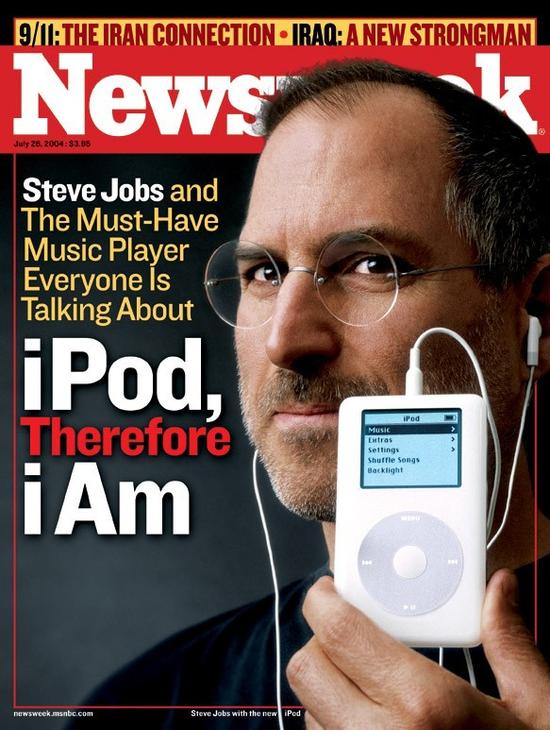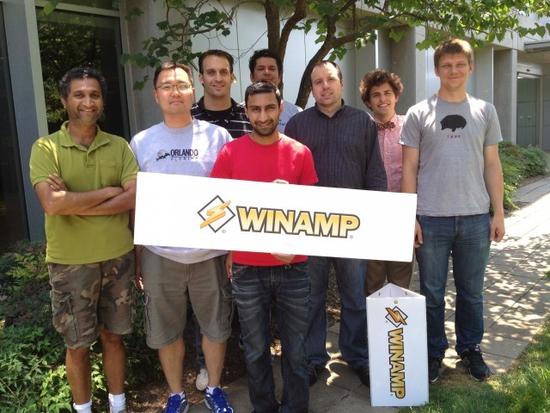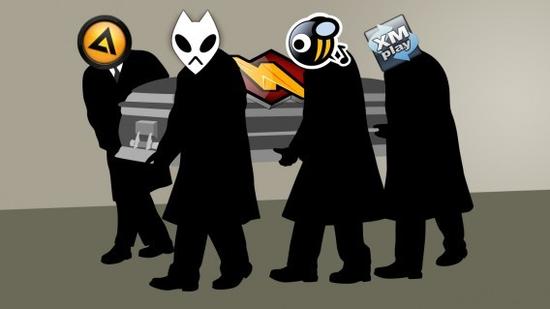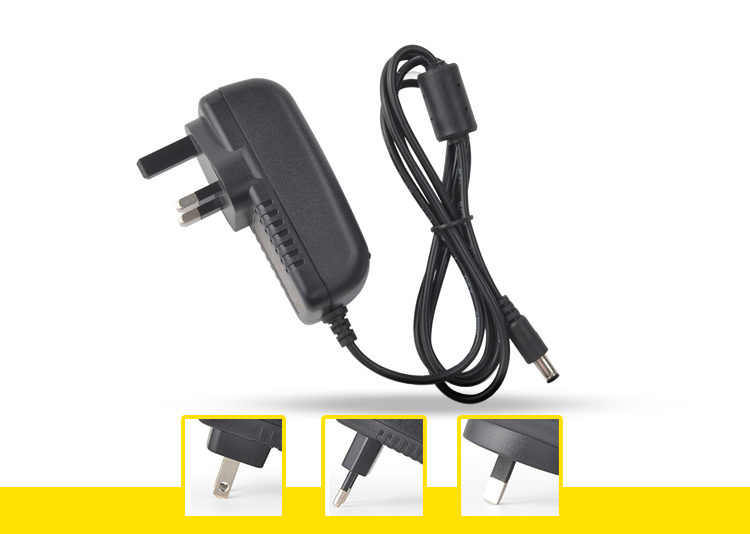(Original title: Winamp's woes: How the greatest MP3 player undid itself)

(Many people have a special liking for Winamp)
For today’s people, when it comes to listening to music, many people think of editing a song list on a music app and then enjoying the loved ones outdoors anytime, anywhere. Apple users may also use iTunes and Apple Music. But before mobile internet comes, people enjoy music in another way. In the MP3 era, there was a "installed machine" software called Winamp. Having experienced the irresistible and absurdity, when the software was announced to shut down services in November 2013, the technology media lamented that this was the end of an era.
MP3 is a generation of music memories, and it is now difficult to imagine what it was before high-quality compressed music appeared. However, for some time, even if the MP3 format has become mainstream, managing, ripping, and playing back personal music collections is still a tedious and frustrating experience.
Until April 21, 1997 Winamp was born. This is the first MP3 player with customizable skins. When the software starts, the phrase "Winamp, it really whips the llama's ass!" is the originator of the slogan advertisements for cool music and other music software. In the late 1990s, Winamp was a must-have software for music lovers. After the launch of the software, it became famous overnight. The value of the original obscure development company also rose. In June 1999, Nullsoft was acquired by American telecom giant AOL for $80 million to $100 million and became a subsidiary of AOL. However, it turns out that Winamp's innovations have ceased to exist at the moment of being married to giants.

(With the popularity of Winamp players, “Winamp, it really whips the llama's ass!†has become a familiar brainwashing sentence for music lovers all over the world.) This sentence literally translates into Chinese as “Winamp, licking llama's ass!†The intent was unknown. Some foreign netizens explained that Winamp developers are typical nerd programmers. American programmers in the 1990s used “llama†to ridicule their unsavory people. It should be noted that later the llamas became Winamp releases. Nullsoft's mascot.)
In 2012, Winamp celebrated its 15th anniversary in a low-key manner. The days of congratulations should have been very few. It seems that the Internet has long forgotten the strange slogan that once brought delight to millions of people. People no longer remember that the company behind the software had hoped to transform the digital music industry. This is not an exaggeration. Winamp went awry and missed the opportunity due to poor management. Jobs then led Apple to complete what could have been done by Nullsoft.
"If there is no improper management after the AOL acquisition, Winamp is completely possible to stand in the position of the current iTunes." Rob Lord, Winamp's first general manager and also the first employee.
Nullsoft is unwilling to be a mediocre software company. The founder's youthful spirit and AOL's old-fashioned style are different, laying the seeds of conflict for future conflicts. Just one year after being acquired, Nullsoft founder Justin Frankel released Gnutella and made it open source. This is a function of exquisite file sharing software, a time to become a weapon for people to obtain pirated music on the Internet, which makes AOL behind the funding is greatly annoyed.

(Frankel's two pictures of different styles at different ages)
In early 2004, Rolling Stone magazine named the founder of Nullsoft as "the most dangerous geek in the world". However, such people are not suitable for AOL. Sure enough, Frankel resigned in the same year. He expressed his original intentions on his website: "For me, programming is a form of self-expression, and the company has more constraints on it. I personally cannot accept this, so I can only leave." It was deleted again.
Winamp's update did not stop: In 2010, AOL brought it to the now-emerging Android phone platform and released the Mac version in 2011. Winamp made a lot of money for AOL. A former Winamp employee revealed that the project will still generate $6 million in annual revenue in 2012. Despite the MP3-style micro and competitive products, Winamp still has millions of users worldwide. Most of the users are from outside the United States.
The history of Winamp, a legendary software, has been removed from the official website, both good and bad. The software that used to have unlimited potential is how to waste talents and miss opportunities. The following one by one.

(AOL launched Android version of Winamp in 2010)
Rapid rise
Like most software's birth, Winamp was written by the original author to solve one of his own pain points. Compressed music format has just entered the mainstream 20 years ago and it is inconvenient to play and manage.
The German scientists who developed the MP3 format standard released the first encoder in July 1994. In the past three years, the market could not find a really good player software. So Frank decided to write one. "Winamp provides a way to listen to MP3s easily and happily on a computer. It is not the first MP3 player, but the previous software was too difficult for me to use," he said.
As early as before the birth of Winamp, the existing music player software on the market was very difficult to use. Whether it is Microsoft's Windows Media Player or software maker's RealPlayer, it seems to be a torture. These software are bloated, but their functions are lacking. Does not support playlists, let alone visual effects and custom skins.
Winamp was officially released on April 21, 1997. The software is called "Windows Advanced Multimedia Products". When Frank set up Nullsoft the following year, Winamp also offered a free version and a $10 paid version, noting that there was no difference in the functionality of the two versions. Since there is cheap money, will someone pay for it?
Facts have proved that not only are people willing to spend money honestly, but they also allow developers to earn enough money. "Before being acquired by AOL, we constantly received cheques worth $10, and we earned $100,000 a month," said Rob Lord, general manager of the company.
Lord is also a creative young talent. He co-founded the Internet Underground Music Archive with others during college. This is the world’s first genuine online music library and is considered to be a precedent for the online music revolution. Rob Lord currently works for his startup company, Sherpa.io. The company is headquartered in San Francisco and is not far from technology companies such as Twitter.
The story of Lord and Nullsoft began in May 1999.
"My title is the head of online strategy, although I don't know what this means. In addition to writing the program itself, there are many strategic and tactical decisions. Justin is responsible for programming and only he has access to the source code. I look at it from a business perspective. Products make the website profitable.â€
How to make the company make money is also Lord's job content. Just like start-up companies in the 1990s, this involves the promotion of advertising, and sometimes it involves cooperation with other startup companies. Lord moved from his home in California to the small town of Sedona, Arizona, when he was nearly 30, and joined Frankel's team. Frankel, then 18, also stayed with his parents. Frankel’s father, Frank, also joined his son’s company as a legal advisor and chief financial officer.
The local population of Sedona only has more than 10,000 people and attracts millions of tourists each year. Sedona is famous for its gravel in the orange glow of sunrise and sunset, attracting many hiking and cycling enthusiasts, but also a spiritual resort.

(An important reason why Sedona attracts tourists is that it is rumored to be the center of Resonance energy in the entire earth. This saying has been passed down. Many European and American spiritual believers believe that there is a magical energy vortex in this small town. Nah called it the most spiritual holy place in the United States.)
Nullsoft's own style is not unrelated to Sedona's unique geographical features. Lord recalled that if the decision was made when the information was not enough, Frankel would show a kind of attitude towards people and things in the sky. He believes that everything has its own arrangements.

(Lord, only 30 years old, joined Frankel and became Nullsoft's first employee.)
Waiting for the price
Winamp quickly conquered everyone after its launch. In the first two years after Lord joined Nullsoft, the number of Winamp users soared from 15 million to 60 million, and the acquisition offer also followed.
The other party rarely directly stated that it wanted to acquire, but instead tentatively asked, "What plans do you have in the future?" Nullsoft's valuation was soon fired to nearly $100 million, which is a very difficult to reject purchase price.
In June 1999, Nullsoft and Spinner were combined by AOL for a total of US$400 million. Spinner is a California streaming media player startup company. Founder Frankel received nearly $60 million worth of AOL shares. His father, Frankel, also received stock worth about $15 million.
AOL integrated Nullsoft and Spinner into a single unit, and Nullsoft members moved to Spinner's converted garage location. All parties in the transaction are looking forward to what will happen next. At the time, everyone believed that AOL would do a lot of work in the music industry and might create something that was as popular as MTV. Spinner has established a molding service and has an experienced management team. At the same time Winamp gathered a large number of users with high-quality software.
At the time of the acquisition, Nullsoft and Spinner did not know that they were "packaged and acquired" with each other. The culture of the two brands is different, so that they will foreshadow in the future.
At first, Winamp continued its good momentum. Each month, their websites earn hundreds of millions of hits, and relying solely on advertising, they have already been able to generate substantial revenue.
After a long period of time, the problem quickly became apparent.
cultural conflict
The former employees revealed that there is a deep gap between Spinner and Nullsoft corporate culture. What's worse is that the two companies were simultaneously acquired and sometimes they couldn't figure out their ownership. Nullsoft had only four members at the time of the acquisition. When he arrived at the site of Spinner, he felt uncomfortable. He actually supported a tarpaulin and separated himself from the other person.
With a lot of money, Nullsoft is at the helm of Lord and Frankel and oversees the recruitment work after the merger. Chamath Palihapitiya joined in this period, responsible for product and business development. Seven years later, Palihapitiya became a Facebook executive and was also the boss of the Golden State Warriors. The New York Times called him an "unconventional venture capital expert."
“The first day I walked into the office, I saw a tarpaulin standing upright in the middle of the street.†Palihapitiya recalled the situation when he was on the job. He described Nollsoft's workplace as a modified sweatshop, and made people wonder what happened inside.
Palihapitiya is a Canadian from Sri Lanka and graduated in electrical engineering. He had worked at a financial company for a year before, and after being bored with work, he decided to jump into the interesting science and technology community. He applied for a resume for Nullsoft, eBay, and Google, and only Nullsoft received him.
After recruiting, a team of Franklin, Lord, Steve Gedikian (currently a senior manager of Apple) and Ian Rogers (now CEO of Topspin) formed Nullsoft's new management team. Despite the lack of formal business training, these people succeeded in bringing Winamp's performance to new heights.
Nullsoft's friction with Spinner is more than just a layer of tarpaulin. AOL believes that although Nullsoft has more users, Spinner is a more mature company with more orthodox leadership. As a result, Nullsoft was placed under the management of Spinner.
Later things were not pleasant. Nullsoft thinks Spinner is biased in budget allocation. Spinner had nearly 60 people at the time, and Nullsoft had only 4 people out there and outnumbered. Without leadership, the number of users will not help much.

(AOL is known for its bad reputation as a product killer. Nullsoft and Spinner's development after acquisition was not impressive. Nullsoft was sold off. Spinner's poorly-operated Spinner was shut down by AOL in 2013.)
Nearly Spotify today
When Nullsoft resented being scorned by Spinner, he received another tragic message: AOL focused on the cash cow of traditional Internet access, and other acquired businesses were only second to none.
The annual report submitted by AOL to the SEC on June 30, 2000 shows that the Internet access business has 23.2 million users, which is slightly lower than the number of Nullsoft's 25 million users. However, there is a difference between the two in terms of liquidity. AOL naturally has to focus on the development of the former.
Winamp missed the opportunity to transform the music industry, and AOL is at fault. In 2000, Palihapitiya and McIntyre, who spotted the development of the market, drafted a music subscription service plan. However, the plan was not approved until 2003. It was two years later when market leader Rhapsody launched a music subscription service.
McIntyre pointed out that AOL did not attach importance to music services because it was too obstinate to its own payment system. This payment system is integrated with its network access service. But if you are still using your old payment system on your music service, it would be as stupid as Yahoo! asked Flikr users to log in with Yahoo Mail.
This brings up another big problem for Winamp: Winamp's maverick culture cannot coexist with AOL. The Winamp user is a group of music enthusiasts, geeks and those who have very high requirements for MP3 sound quality. These groups are for AOL. The big companies are generally not favored.
If it is not for AOL to force Winamp to install Netscape Browser or other AOL packages, Winamp will have more users.
AOL could have become Spotify and Pandora today. AOL had the best channels and software resources before and after 2000: Winamp, the best player software, a content library, and a broadcast service, all of which—except for a piece of hardware like the iPod—but in the end Still missed the digital music revolution.
AOL is only thinking about how to turn Winamp's mass users into its own network access service customers. In addition to network access services, other liquidity strategies have been marginalized. As a result, network access and Winamp stagnated both years later.
McIntyre's summary was straightforward: “AOL only knew that Winamp was a valuable asset between 2002 and 2007, but knew nothing about how to use it.â€
Missing time, iPod and iTunes appeared
The market did not leave AOL with too much hesitation. At the end of 2001, the iPod went public. At the press conference, Jobs proudly stated that he was exactly the same as Frankel said: "Although there are many MP3 players on the market, they are all too bad." By 2003, Apple had sold 1 million iPods. , and supporting the launch of the iTunes Music Store.

(Jobs and Apple's savvy place is that, although not the first company to enter the market, it always integrates hardware and software to do the job.)
"Apple dominates the market. AOL has handed over 26 million users to be developed. Apple understands that digital music is a more favorable way to spend. They built this door and we did not go the other way." A former Winamp employee said .
Other employees also agree with this view, attributed the decline in Winamp growth to AOL's unfavorable integration.
"AOL is more used to denying progress than any company I've seen before. These bureaucrats regard every decision as a political decision. Real good ideas cannot be realized," Palihapitiya said.
After AOL introduced MusicNet in 2003, it was too late. Numerous industry insiders lament that if Winamp and Spinner can better collaborate, if AOL wakes up early, the history of digital music may look different.
"Executiveness is crucial," concludes Palihapitiya. "I think the biggest problem in most acquisitions is that the buyer always tries to exert excessive control over the acquiree and eventually suffocates the young company. Some of them are not malicious, but the vast majority of acquisitions have come to this end. Nullsoft and The same is true of AOL's example. If you let it (Nullsoft) operate as an independent unit after the acquisition, it may be able to do more and better."
At the same time, the quality of Winamp itself also fluctuates. The original Winamp was popular because of its light weight, fast speed, and then Nullsoft's manpower was sufficient, and the software became bloated. After the release of Winamp 3.0 in 2002, many older users preferred to use the old version. In 2003, as the iPod and iTunes skyrocketed, Winamp was sinking.
break
Frankel, the creator of Winamp and Gnutella, did not have Jiang Lang. He still had many wonderful ideas, but his creativity got only the anger of AOL.
As an innovative Internet file sharing tool, Gnutella has become a way for netizens to spread pirated music. The Recording Industry Association of America threatens to sue Gnutella's users to court. Frankel, impatient with the big corporate system, tried to make Nullsoft and himself immune from restrictions. In fact, Frankel had already turned from the original young talent to the destructive elements in AOL's eyes. In addition to having an angry Gnutella in 2000, Frankel also wrote a small program that specifically intercepts AOL ads. It is simply eating other people's food, but also the pot of others.
"As a company, AOL should not sit back and forget about losing customers." Frankel said in 2004 when he was interviewed by Rolling Stones. "I am also a shareholder of the company and I hope they will continue to innovate. I hope they will do something beneficial to the world and society."
Frankl continued his own way. In May 2003, he released Waste, an encrypted file sharing and chat network, four months after Nullsoft was acquired. Facing this “provocative innovationâ€, AOL stopped the business within 24 hours.
The company insists on displaying the AOL logo during the Winamp installation process. Frankel fires: "Our users don't want to use AOL. They think AOL is awful." The two sides looked tired of each other, and the relationship was so bad that it couldn't be repaired.
Frankel agreed to stay up until the release of Winamp 5. Winamp 5 was released in December 2003 and Frankel resigned after a month. In the following year, AOL completely shut down Nullsoft, and the remaining staff moved to Dulles headquarters to work. After the incident, "Slate" magazine lamented the disappearance of the last "Maverick company".

(In 2012, there were few employees responsible for maintaining Winamp.)
Life for Winamp
When the founder left the company and the company was disbanded, Winamp did not immediately die. It just did not launch a new version for the next three years.
Ben London, the former AOL Senior Technical Manager, took over Winamp in 2004. He acknowledged that AOL’s changing strategy has slowed down the development of software.
"There is no patience for long-term investment. We have just established a six-month route plan and suddenly we are reorganized into another department. The new leaders demand that we pay attention to other places."
But Winamp survived. Winamp released the tenth anniversary edition in 2007. The number of users reached a record high in the post-frankel era, with 90 million active users.
By analyzing the source of the users, the Winamp team found an unexpected fact that the number of users in the United States dropped to a negligible level, but the international market was a triumphant victory. Winamp has harvested 5 million Turkish users and 2 million Brazilian users.
Winamp, who had troughed the trough, tried to make a comeback. The team tried to come up with a new business plan for Winamp, wondering if it was possible to provide download services, streaming media services, or simply sell ads at the time of installation.
The Winamp team updated the user interface and codecs to make Winamp more in tune with the habits of emerging groups. They use web traffic to make money, and more importantly, they provide multi-language support.
In short, Winamp started doing AOL in 2012 long ago.
Cheap sale, no audio

(Generation legend call for a curtain)
All the start-up members have now left, and Winamp and Frankel are no longer in touch. Winamp's user base stagnated, while Spotify, Pandora, and iTunes continued to grow, and Apple introduced the streaming media version of Apple Music in 2015.
Geno Yoham has been the general manager of the Winamp project since 2008. He said that Winamp still has brand value in 2012 and wants to continue to make color media players, especially in emerging markets where iTunes has yet to deepen.
Once Spinner executive and later venture capitalist Josh Felser tried to buy Winamp from AOL, he was optimistic about the creative community behind the software and believed it was still profitable. Later there were rumors that Microsoft intends to acquire Winamp and eventually it will be over.
Winamp, originally scheduled to close the service in December 2013, eventually survived. In January 2014, AOL announced that Winamp, along with SHOUTcast, will be sold to Radionomy, a Belgian online radio company, for between US$5 million and US$10 million. The deal has left many hopefuls, but since 2014, people rarely hear about Winamp again. (Sun Wenwen)

About this item
- 9V Switching wall charger
- 110V input voltage / 9VDC 1A/2A/3A... output voltage
- For use with Arduino Uno, Mega and MB102 Power supply boards
- Connector size: 5.5 x 2.1mm/5.5*2.5mm...
- Center or Tip is positive, sleeve is negative
9v wall charger,AC Power Supply Wall Plug,Wall Adapter Power Supply,9V Power Adapter,ac 50/60hz power adapter,Wall Adapter Power Supply - 9VDC,100-240v converter switching power adapter
Shenzhen Waweis Technology Co., Ltd. , https://www.waweispowerasdapter.com
